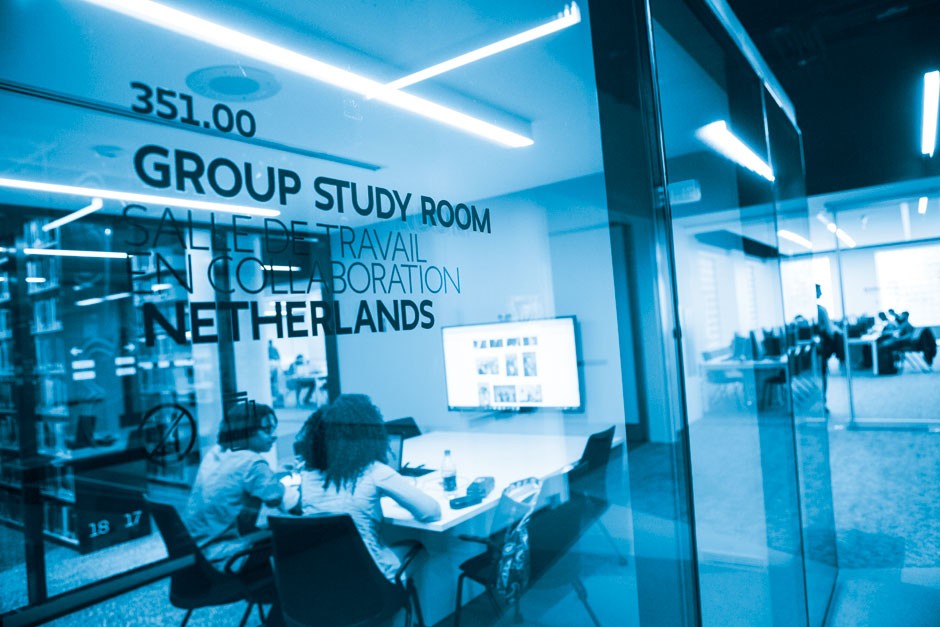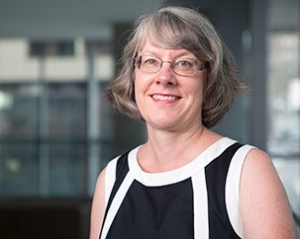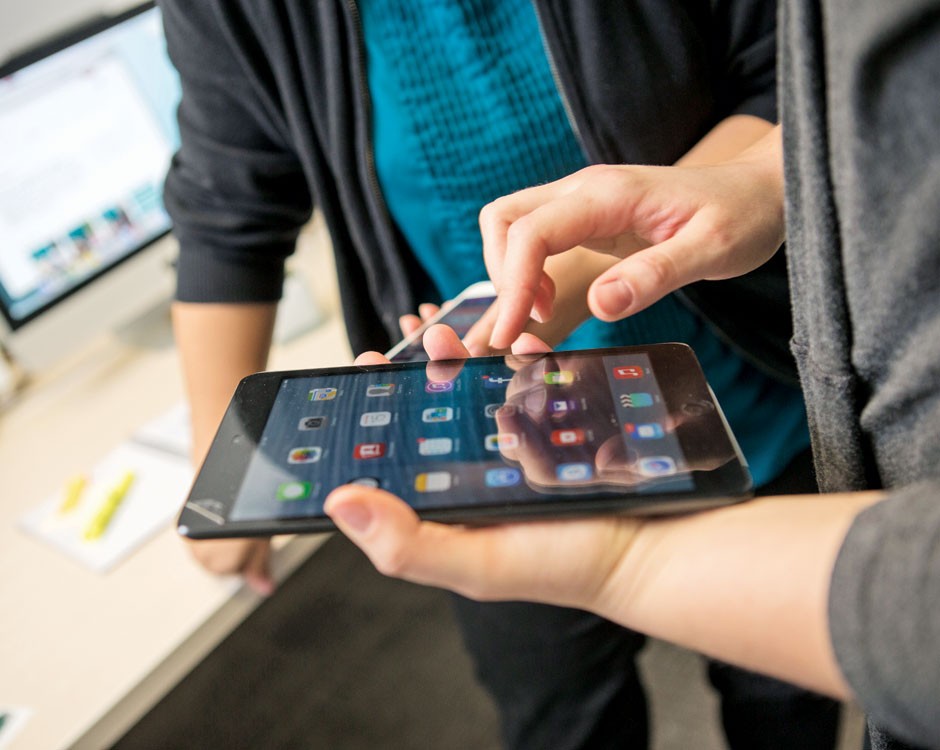When Concordia announced its set of nine Strategic Directions in 2015, the goal to “Teach for tomorrow” might have sounded like a jargon.
Instead, it’s really a mantra for a digital overhaul that’s changing both the physical and mental space of the university, from classrooms to libraries to the way students and professors communicate. “It’s been interesting to see the Strategic Directions evolve in a way that takes into account both our history and strengths on the one hand, but also the fast-changing nature of the educational and social landscape on the other,” says Benoit Bacon, BA 95, Concordia’s outgoing provost and vice-president of Academic Affairs. “I think we have evolved a roadmap that will guide Concordia’s continued evolution further on its distinctive path as an innovative, forward-thinking and socially engaged, next-generation institution.”
Graham Carr, Concordia’s vice-president of Research and Graduate Studies, says that the university is simply following the steady rush toward digitization that’s taking place in all of our personal, home and work lives. For him, the notion of a digital university is one in which all aspects of student and faculty life are channelled through digital media in order to maximize content quality, network opportunities and prospects for learning and discovery. How, he wonders, could the university not mirror the essential nature of a society that is now so incredibly plugged in?
“I see it as a huge opportunity that’s already here — we’re already living it,” Carr says. “To me, it goes beyond the classic questions about online education or bringing digitization increasingly into classroom activities. The reality is that it’s a sine qua non of 21st-century research activity, of collaboration and partnership. It’s almost unimaginable what the transformative power of digitization will be, in terms of our capacity not just to access and generate information, but reconceptualize how we do things and with whom we can now begin to do things.”
So the process of Teaching for Tomorrow isn’t so much attempting to imagine the university of the future but keeping up with technological progress as it occurs, being willing to try out new ideas and thinking as much as possible about how to bring cutting-edge technologies into the service of student-faculty relationships.
This instinct is part of the university’s DNA, going back to its roots. Sir George Williams University, one of Concordia’s founding institutions, began life in the 1920s through night courses — providing access to advanced learning to those who otherwise may not have had it. Online courses are another next step in that process of knowledge delivery.
Library leadership

 Catherine Bolton, Concordia’s vice-provost of Teaching and Learning, has witnessed a vast sea change in how technology is used and viewed by professors in her 26 years at Concordia.
Catherine Bolton, Concordia’s vice-provost of Teaching and Learning, has witnessed a vast sea change in how technology is used and viewed by professors in her 26 years at Concordia.
 Graham Carr, Concordia’s vice-president of Research and Graduate Studies, says that a move toward becoming a digital university means fully meeting student and faculty’s needs for better learning and discovery.
Graham Carr, Concordia’s vice-president of Research and Graduate Studies, says that a move toward becoming a digital university means fully meeting student and faculty’s needs for better learning and discovery.
 “Thank heavens, we always have early adopters — that’s fantastic.”
“Thank heavens, we always have early adopters — that’s fantastic.”